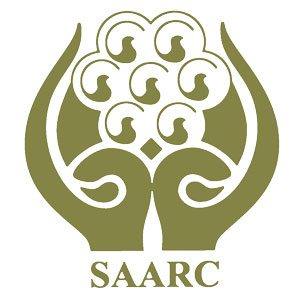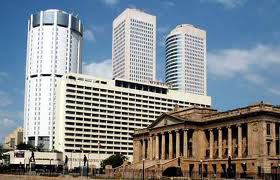Maldives SA - Ties Prosper
Dr Srimal Fernando engages H.E. Aslam Mohamed Shakir, Minister of State for Foreign Affairs, Republic of Maldives
A brief background/Bio of the Minister of State for Foreign Affairs, Hon. Aslam Mohamed Shakir.
Hon. Aslam M. Shakir was appointed as Minister of State for Foreign Affairs on 17 May 2011.
He was born in the island of Madifushi in Meemu Atoll of the Maldives. He was educated in Male’ English School in Male’ and Science Education Centre in Male’. He went to the University of the South Pacific, where he studied Town Planning and Land Management. He followed on to complete a Master’s Degree in Geography, specialising in Strategic Environmental Assessment at the University of Otago, New Zealand.
He has published a book titled, “Post-Disaster Strategic Environmental Assessments (SEAs), Benefits, Constraints and Opportunities (LAP LAMBERT Academic Publishing AG & Co., Saarbrücken).
He has been an active member of the Maldivian Democratic Party since October 2005 and serves as member of MDP National Council and as member of the Standing Committee on Land, Agriculture and Natural Resources since 2006 and served as Cabinet Secretary of the Shadow Cabinet and as Deputy Spokesperson of the MDP Presidential Election in 2008.
In the present government he has served as, Minister of State for Housing, Transport and Environment, Policy Secretary at the President’s Office and Minister of State for Finance and Treasury.
Srimal Fernando: What is the current state of the Maldives –South Africa relations and your government’s objective for enhancing them?
Foreign Affairs Minister Shakir: The Maldives and South Africa continue to enjoy friendly relations since the establishment of diplomatic relations in July 1994. We believe that both Maldives and South Africa has a lot to learn from each other and could explore mutual benefits irrespective of the differences of size. We give paramount importance to Sustainable Development – the development in which we could maximize our social objectives and business opportunities while applying environmentally friendly methodologies. This is considering both short-term and long-term implications of our political and technical decisions.
As a country that has emerged from 30 years of autocratic rule to a multi-party democracy, the Maldives has a lot to learn from the transitional experiences of South Africa. Transitional Justice is an area in which South Africa has given hope to countries that are embarking on or going through difficult transitions from a repressive regime to a democratic, free and rights-based regime of governance.
South Africa has well established world-class reputable institutions of learning, including universities and technical and vocational institutions. Tourism is a major foreign exchange earner in South Africa like the Maldives, although the tourism products offered by South Africa may be more diverse than those offered by the Maldives. This is an area where the Maldives gain a lot of know-how and experience from South Africa.
As a large emerging economy, South Africa is expected to play a significant role in International Affairs, and is also a potential tourism market for the Maldivian tourism industry. The Maldives also seeks to enhance trade relations between the two countries, particularly as South African products are reputed to be of good quality. South Africa has huge potential to be a major tourism market for the Maldivian tourism industry. This has already been tested and proven when there were direct air links between South African cities and Male’. In addition to that, the Maldives being a net importer of all sorts of consumer items, the huge range of high-quality products, including fruits, vegetables, meat and poultry products that are produced in South Africa can be imported to the Maldives. However, in order to facilitate these trade exchanges, direct air links need to be re-started. The technical and vocational educational development are key areas that requires external support.
SF: How are your government’s preparations progressing for the seventeenth South Asian Association for Regional Cooperation (SAARC) Summit to be held this year in your country?
FM: The preparatory work is all on schedule and the Summit is going to be held in the South Province of the Maldives from 10-11 November 2011. As announced by the Maldives Government, the 17th SAARC Summit will be held in the Southern Province of the Maldives. For the first time a SAARC Summit is being held in the southern hemisphere.
SF: Has the Maldivian government decided to invite a South African government delegation as observers to the 17th SAARC Summit?
FM: We would welcome South Africa to be an observer and we would support such a request. However an existing moratorium, which will expire at the end of July 2011, prevents new countries from becoming observers. We encourage those countries who are interested in becoming SAARC observers to follow the due process and request the current SAARC Chair, Bhutan, expressing their interest.
SF: “The impacts of climate change can already be felt” “One-third of our inhabited islands are suffering from coastal erosion” remarks by President Nasheed of the Maldives. How is your government addressing these concerns of climate change and rising seas in the Maldives?
FM: Climate Change and Sea-level rise has always been a concern to the Maldives and over the past few years climate change adaptation measures are well prioritised within the Government. The Strategic Action Plan, the action plan of the Manifesto of the current government, accords high priority to acknowledging and taking positive action on adaptation to climate change as a basic right of the people and identifies actions points to address this in the next five years and beyond. The President of Maldives has declared the ambitious target of the Maldives to become carbon neutral by 2020. Under the GEF funding we are already implementing a project “Integrating Climate Change Resilient Island Planning in the Maldives (ICCRRIP)” and the government is working closely with all like-minded countries in the international community to achieve this target.
In this context, the government has already concluded a national carbon audit. The carbon audit will facilitate the rolling out of the carbon neutrality plan by identifying specific areas that need to be focused in order of priority. The focus is also on rising sea levels, global warming and on green house gases.
While, at present fossil fuels are comparatively cheaper for the generation of power than the investments required for the generation of renewable energy, the Maldives is convinced that as the world turns to a Green Economy and the renewable energy technology leap-frogs in the future, the long-term cost of investing in renewable energy is bound to become not only cheaper but also more ethical.
One of the solutions to battle coastal erosion is through reclamation of land. The Maldives is learning of new technologies of land reclamation that does not affect the well being of the delicate coral-reef systems that consists of the Maldives. Recent reclamation projects that use modern technology to identify and pump out sand deposits in the deeper sea, away from the reefs are proving to be more effective, efficient and its impact on the fragile reef ecology minimal. The environmentally friendly dredging to minimise damage to the marine ecology is step forward to adopt to sustain the process. In addition the government is looking forward to develop curriculums to enhance the knowledge on environmental education. Since it is the peoples mindset that requires a change to look on safe guarding the planet.
SF: Has the Maldivian government decided to send a high level delegation to the 17th United Nations Framework Convention on Climate Change (COP 17) to be hosted in Durban, South Africa in November?
FM: The Maldives will continue to play an active part in the international negotiations on climate change and the Government of Maldives will send a High Level delegation to represent the country at the COP 17 in Durban.
SF: The Maldives exceed 700,000 tourist arrivals per year. What are your thoughts of selling Maldives to the South African tourist markets?
FM: South Africa had been a valuable market for the Maldives tourism industry in the past when there was a direct charter flight operation between South Africa and the Maldives. However, once the operation stopped the number of arrivals has decreased considerably. The government believes that a new initiation of direct links would benefit trade exchanges between both countries.
SF: What opportunities are there for setting up a foreign investment or joint ventures in the Maldives?
FM: Maldives has adopted a very liberal policy to attract foreign investments. As such no limitations pertaining to equity participation exists and up to 100 percent foreign private investment is allowed. The economy has enjoyed robust growth averaging close to 8 percent per annum during the last decade, particularly through the success and continued expansion of its tourism industry. To build on this growth, the government recognises the need for greater private sector involvement and foreign direct investment in the Maldivian economy. The process of registering a foreign investment, as required by Law, is simple and straightforward. Maldives offers safe haven for foreign investor’s in-terms of political stability, safe, stable and predictable environment to operate. The most attractive features on offer on for prospective investors are; friendly rules such as, long term lease of land, tax breaks and ability to repatriate a high percent of profits. Many other incentives are provided to foreign investors as well.
SF: What specific sectors offer the greatest opportunities for South Africans investors?
FM: Maldives graduated from the UNs list of Least Developed Countries at the beginning of this year. Today, more than ever before, the Maldives needs investments in all sectors. Despite the high growth potential, health and agriculture are particularly under-invested areas open for foreign investors. As evident from the phenomenal improvement made by South Africa over the years in these sectors, South African investors may find these particularly attractive. Education, tourism and energy sectors are other areas that offer great opportunities. Unlike the well established tourism sector, renewable energy sector is a relatively niche development in the Maldives. The weather conditions in the Maldives offer excellent opportunities for the production of renewable energy on a highly profitable basis. Currently few projects are ongoing and very recently international investors have shown interest to this sector as well. The future of the Maldives economy will be further sustained by a green economic strategy and a blue economic strategy to safe guard and develop the marine resources in environmentally friendly manner.
SF: How can South Africa support to overcome certain challenges faced by your country?
FM: Definitely South Africa is one of the most diverse countries in the world. Maldives could seek cooperation with South Africa in many areas of development. While formal education is fairly established in the Maldives, technical and vocational education opportunities are lacking in the country. The Maldives could immensely benefit from the vast experience South Africa has in this sector. The growing drug problem is a concern for the government. The Government does not have the capability and the expertise to handle the problem. South African expertise in dealing with youth unemployment and drug use among youth can be utilized to address these problems in the Maldives. The relationship between the two countries can be mutually beneficial.
SF: Is there anything else that you would like to add?
FM: The Maldives is keen on intensifying cultural and people to people exchanges with South Africa. In addition the Maldives needs support for institutional development and for capacity development for such institutions. However the Maldivian judicial system is at an infant stage .It is important to strengthen this area with external support. South Africa can support the Maldives to strengthen its judicial system. I would like to recall that there was interest from a South African business group that was interested in developing the transport sector in a certain part of the Maldivian island. Fisheries is another area where South African expertise might be needed. This interest was mainly focused on air and sea transport. South Africa can play a key role in developing the cultural and sports capacities of the Maldivians. People to People interaction between both countries will be a vital aspect in such exchange programs. The other point was building bridges which will be the central theme of the upcoming SAARC summit in the Maldives.




